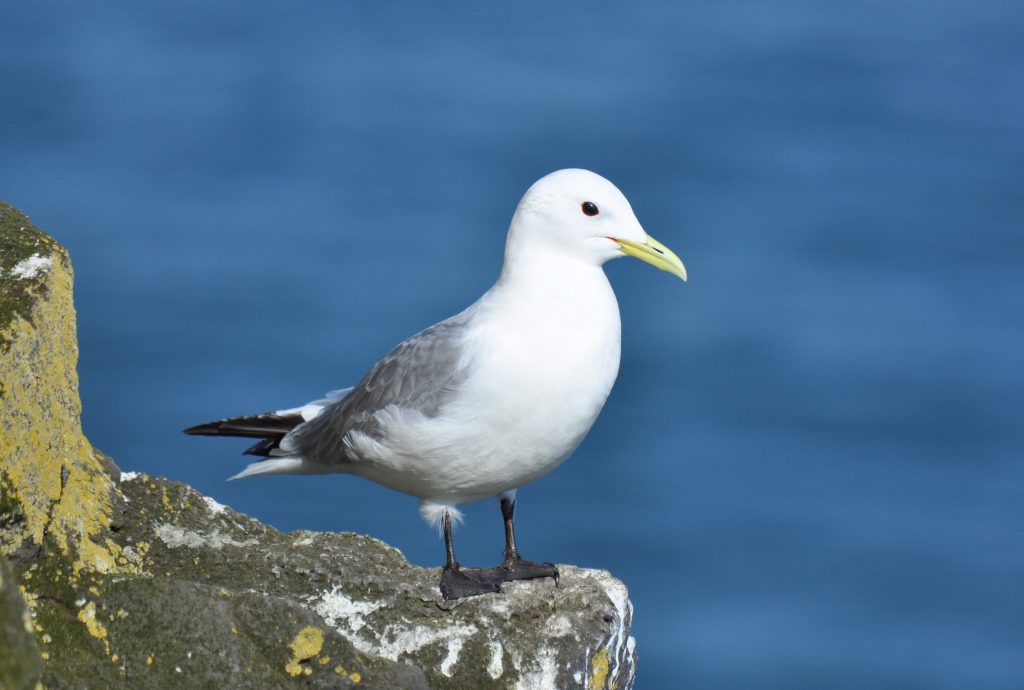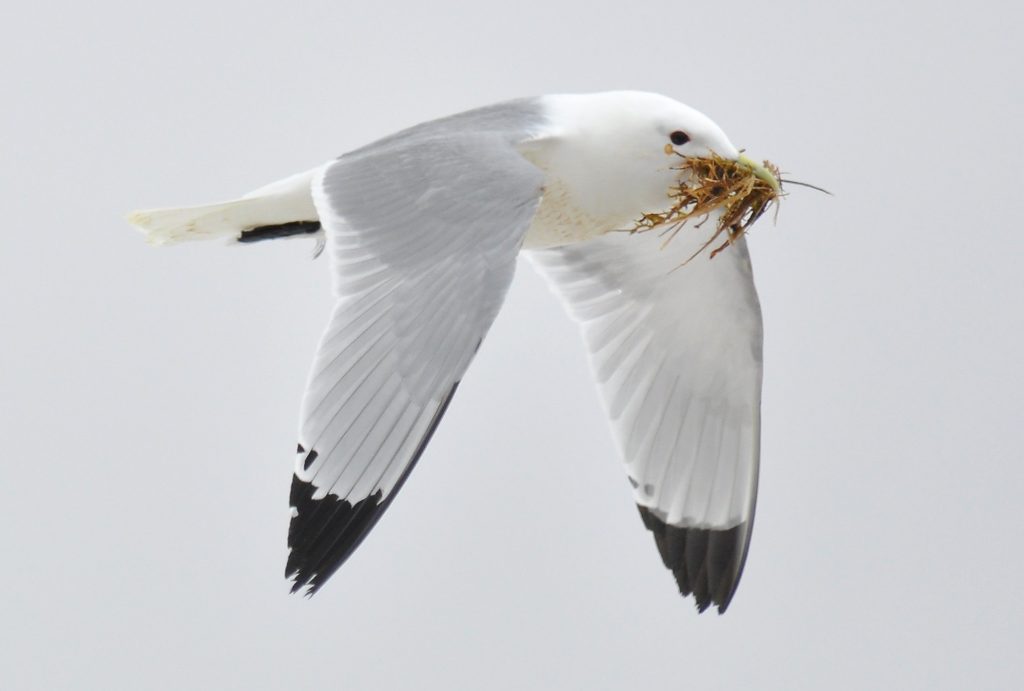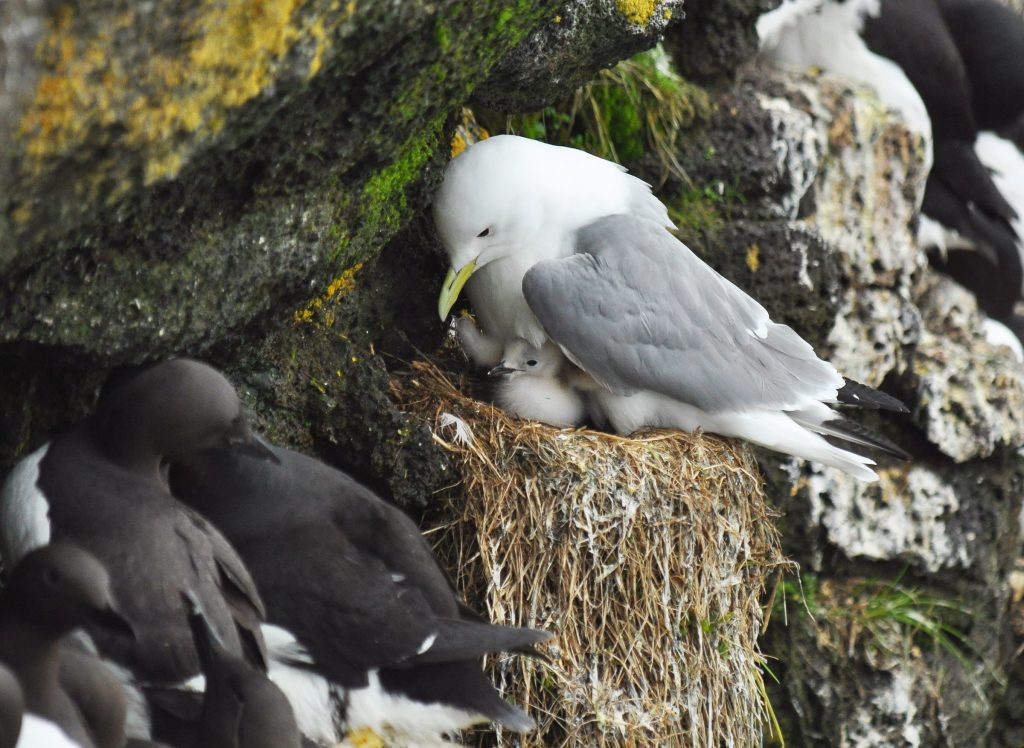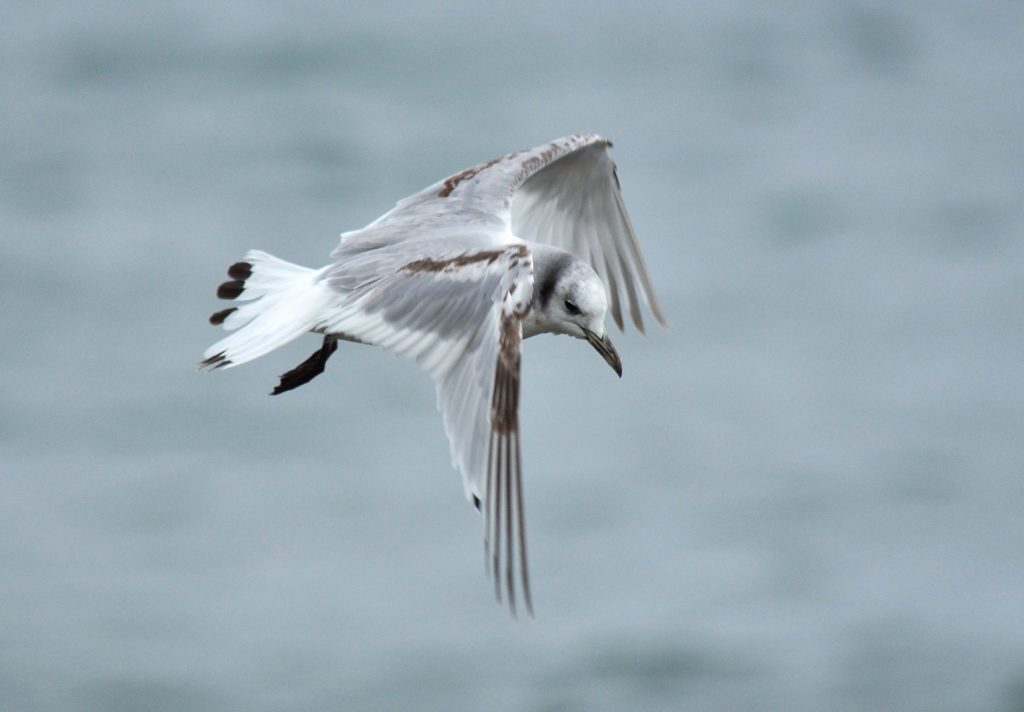This species is a permanent resident of the islands and their associated waters and is potentially the most ubiquitous bird species in the Pribilofs outside the winter season. It breeds on all of the Pribilof Islands with the largest numbers on St. Paul and St. George Islands. The first birds return to the islands’ cliffs during mid-late March in most years, with large numbers present by mid-April. Daily counts in the hundreds or thousands are typical for much of the year with large numbers still present around the islands in mid-late October. Little fluctuation in overall numbers is noticed for much of the breeding season with egg-laying during June, chicks appearing in July, and fledging happening in August and September. Various estimates put the breeding populations at 25,000-50,000 pairs on St. George Island, 10,000-15,000 pairs on St. Paul Island, and 1,000-2,000 pairs on Otter Island. Large numbers will occasionally build at favored roost sites away from breeding cliffs during September and October which are likely a combination of both local breeders and birds dispersing from other colonies. This species moves offshore for the winter months though this timing is not well known due to lack of late fall and early winter coverage. From December-March, this species is only seen at sea and around the island’s coastlines, usually in small numbers and heavily dependent on the extent of the winter ice pack.




